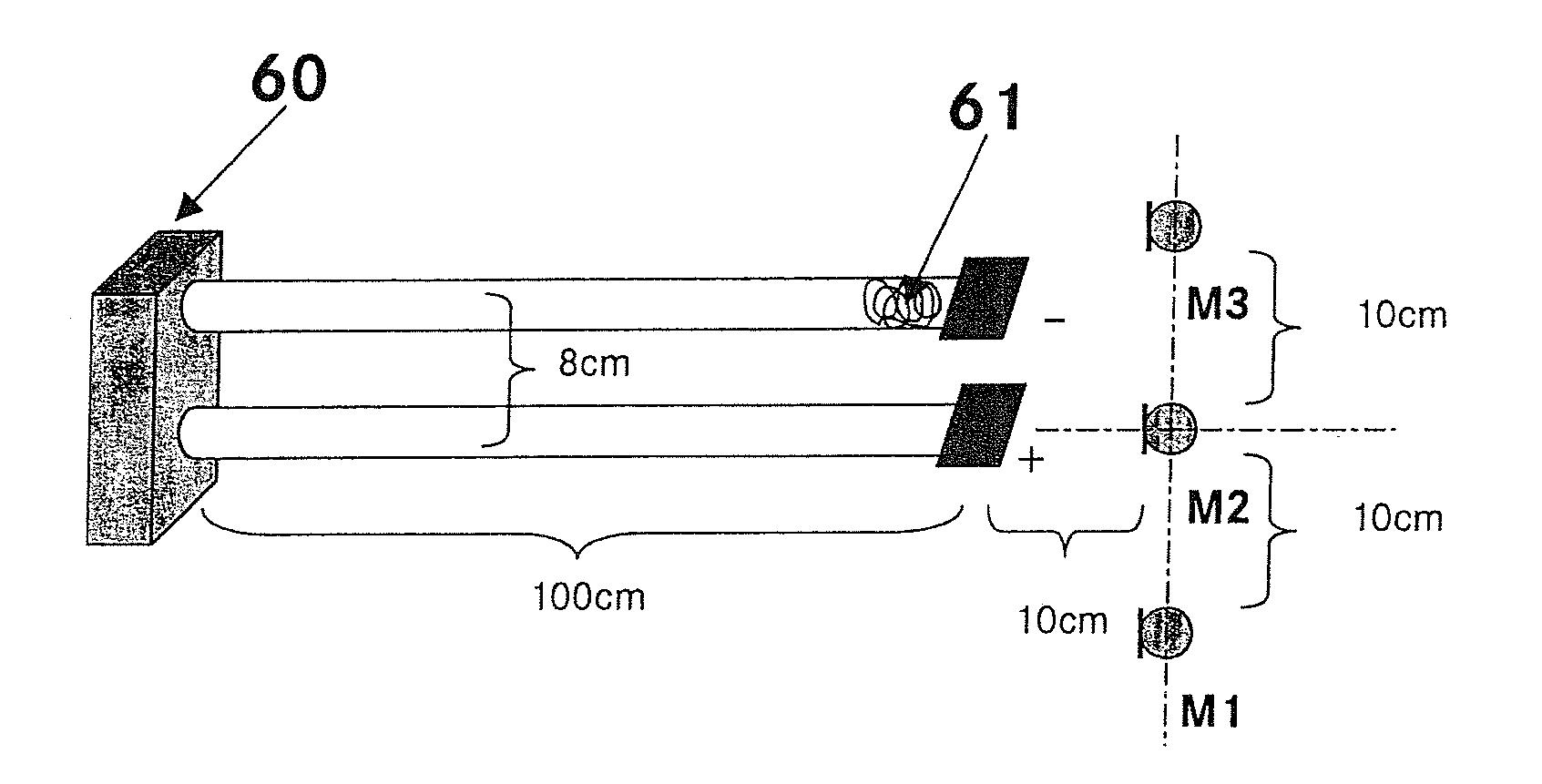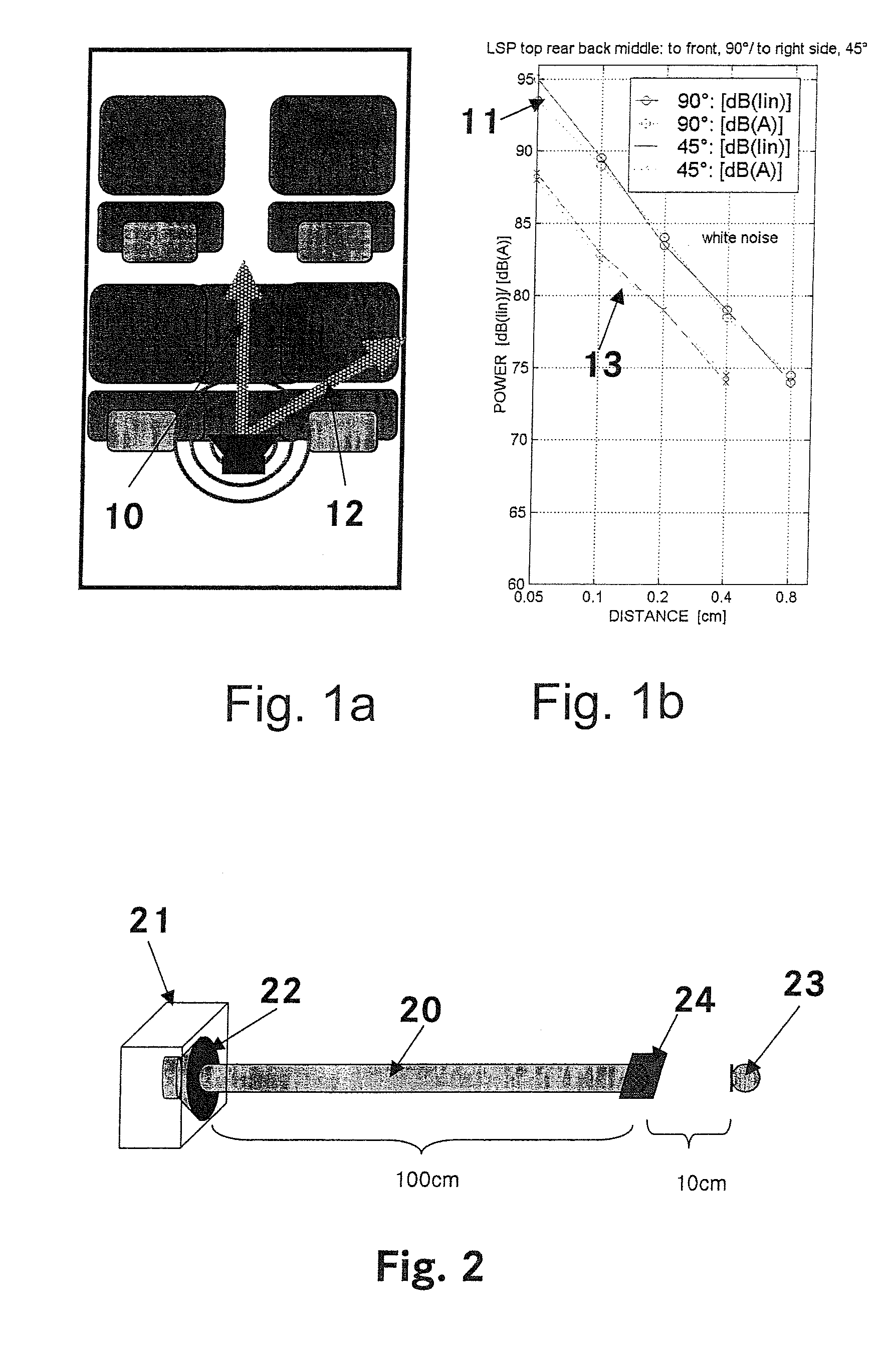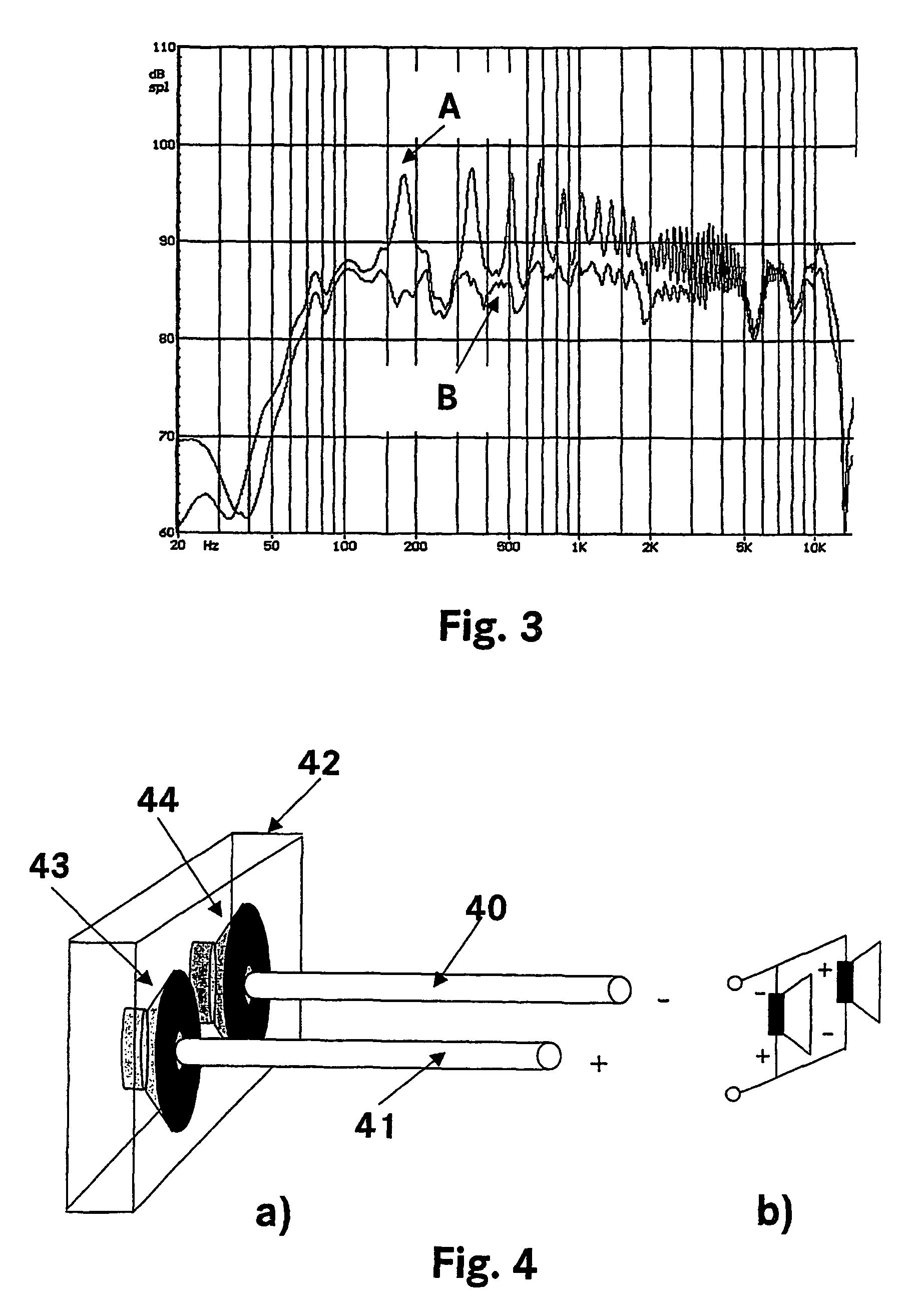Acoustic sound routing in vehicles
a technology for acoustic sound and vehicles, applied in vehicle arrangements, transportation and packaging, instruments, etc., can solve the problems of reducing accident safety, unable to adjust the volume for each seat, and commercial appliances today only allow coarse balancing of volume, so as to reduce resonance effects, reduce the effect of resonan
- Summary
- Abstract
- Description
- Claims
- Application Information
AI Technical Summary
Benefits of technology
Problems solved by technology
Method used
Image
Examples
Embodiment Construction
[0023]FIG. 1a) schematically shows the interior of a motor vehicle with two individual seats, driver and front passenger seats, and a bench seat in the back. Within such a typical vehicle interior, the dissemination of the from a loudspeaker signal radiated in the center above the bench seat's back rest has been measured. FIG. 1b) shows the power drop in the loudspeaker signal as a function of distance. In this context, curve 11 shows the power drop in the direction 10 of the driver and of the front passenger seat and curve 13 shows the power drop in the direction 12 of the passengers on the back seat at an angle of 45° from the loudspeaker. It can clearly be seen that the sound power drops by 6 dB whenever the distance is doubled. This applies to the unweighted level and to the A weighting (the A weighting takes into account the subjective hearing sensitivity in a coarse approximation). The 6 dB value is the correct value if we are in the direct sound field of the sources. This con...
PUM
 Login to View More
Login to View More Abstract
Description
Claims
Application Information
 Login to View More
Login to View More - R&D
- Intellectual Property
- Life Sciences
- Materials
- Tech Scout
- Unparalleled Data Quality
- Higher Quality Content
- 60% Fewer Hallucinations
Browse by: Latest US Patents, China's latest patents, Technical Efficacy Thesaurus, Application Domain, Technology Topic, Popular Technical Reports.
© 2025 PatSnap. All rights reserved.Legal|Privacy policy|Modern Slavery Act Transparency Statement|Sitemap|About US| Contact US: help@patsnap.com



